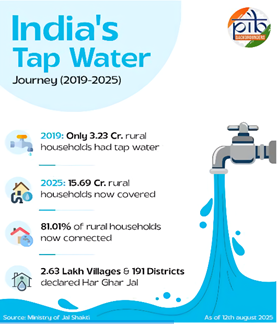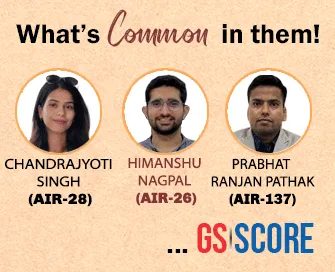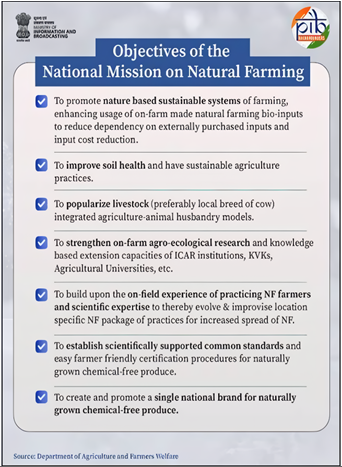

28th August 2025 (12 Topics)
Mains Issues
Context:
The Government of India is considering the continuation of the Jal Jeevan Mission until 2028, after achieving over 15 crore rural household tap water connections.
Transforming Rural India through Har Ghar Jal
Introduction
- Launched on 15 August 2019, Jal Jeevan Mission (JJM) aimed to provide functional tap water connections to every rural household by 2024.
- At inception: only 23 crore out of 19 crore rural households had access.
- Current achievement (Aug 2025):15 crore+ households, covering over 81% rural India.
- The mission is proposed to be extended till 2028 with renewed focus on infrastructure quality and sustainability.
Objectives of JJM
- Universal access to safe and adequate drinking water.
- Reduce drudgery of women and ensure gender equity.
- Prevent waterborne diseases and improve health outcomes.
- Strengthen community ownership of water systems.
- Promote sustainability and source conservation.

Key Features and Enablers
- Decentralised and Community-Led Planning
- Village Action Plans (VAPs): designed by Gram Sabhas.
- Village Water & Sanitation Committees (VWSCs):29 lakh constituted for planning, implementation, O&M.
- Women’s Leadership
- 8 lakh+ rural women trained in water quality testing using Field Test Kits.
- Ensures scientific monitoring and grassroots ownership.
- Sustainability Measures
- Focus on water source sustainability and greywater management.
- Community responsibility for long-term maintenance.
- Digital Monitoring
- Geo-tagged data, mobile apps, and dashboards ensure real-time monitoring.
- Promotes transparency, accountability, and trust.
Impact of JJM
- Health Outcomes
- Decline in diarrhoea, cholera, and other waterborne diseases.
- Education & Gender Empowerment
- Girls attend schools regularly as water-fetching burden is reduced.
- Women participate in SHGs, farming, and microenterprises.
- Economic Upliftment
- Women save time and engage in income generation.
- Improved water access boosts local agricultural productivity.
- Social Inclusion
- Mission ensures coverage of marginalised and remote communities.
Challenges Ahead
- Ensuring quality and reliability of tap water supply.
- Operation and Maintenance (O&M): rural local bodies often lack technical and financial capacity.
- Groundwater depletion and climate-induced variability in sources.
- Sustaining behavioural change and community participation in the long term.
Way Forward
- Strengthen capacity of Gram Panchayats & VWSCs for O&M.
- Introduce water pricing and tariff models for sustainability without burdening poor households.
- Invest in water conservation structures (check dams, recharge wells, watershed management).
- Encourage public-private partnerships in rural water supply.
- Integrate JJM with Swachh Bharat Mission, MGNREGS, and Jal Shakti Abhiyan for holistic water management.
- Promote climate-resilient water infrastructure to handle variability in rainfall and drought-prone areas.


Mains Issues
Context:
The National Mission on Natural Farming (NMNF), launched in November 2024 as a standalone Centrally Sponsored Scheme, has enrolled over 10 lakh farmers and established 2,045 Bio-input Resource Centres
Institutionalising Chemical-Free Sustainable Agriculture
Introduction
- Approved by the Union Cabinet on 25 November 2024, the NMNF is aimed at promoting chemical-free, ecosystem-based farming.
- It restructured the earlier BharatiyaPrakritik Krishi Paddhati (BPKP) under PKVY.
- Financial outlay: ?2,481 crore (Centre: ?1,584 crore; States: ?897 crore).

Objectives of NMNF
- Reduce dependence on chemical inputs and enhance soil fertility.
- Improve farmer income by reducing input costs.
- Strengthen resilience of agriculture against climate shocks.
- Enhance biodiversity, ecosystem services, and food safety.
- Promote community-driven adoption through Krishi Sakhis and SHGs.
Features of NMNF
- Coverage:5 lakh hectares across 15,000 clusters.
- Bio-input Resource Centres (BRCs): 10,000 centres to ensure bio-input availability.
- Financial Incentive: ?4,000/acre/year for 2 years (max. 1 acre).
- Human Resource: 70,000 trained Krishi Sakhis for last-mile delivery.
- Monitoring: Real-time geo-tagging through an online portal.
- Certification: National Centre for Organic & Natural Farming (NCONF) under Participatory Guarantee System (PGS-India).
State-Level Initiatives as Models
- Andhra Pradesh: Community Managed Natural Farming (APCNF).
- Himachal Pradesh:PrakritikKhetiKhushhalKissan Yojana.
- Gujarat: SPKK &Pagala for Natural Farming.
- Rajasthan: Pilot scheme “Kheti Mein JaanTohSashaktKisan.”
Institutional Support
- Training: 806 institutions including KVKs, universities, NF institutes.
- Research: ICAR network developing NF cropping system PoPs.
- Outreach: MANAGE as knowledge partner; KVKs conducting 8,500 demonstrations/year.
- Extension: Blends traditional farmer knowledge with scientific validation.
Challenges
- Behavioural resistance: Shift from high-yield chemical-based to natural farming.
- Market access: Certification and branding gaps for NF produce.
- Productivity concerns: Yield stability in initial transition period.
- Scaling issue: Cluster-based model needs effective convergence with state schemes.
Way Forward
- Strengthen market linkages through APMCs, farmer markets, e-NAM, and branding.
- Provide transition insurance or risk support during initial low yields.
- Expand bio-input entrepreneurship via SHGs/FPOs.
- Integrate digital monitoring with crop health & soil parameters.
- Encourage research-backed PoPs for major agro-climatic zones.
- International collaboration on climate-resilient NF practices.


Mains Issues
Context:
An AI-powered Bhagavad Gita project has reignited debates on authenticity, selfhood, and ethical challenges of artificial intelligence.
Background & Context
- Rise of Generative AI: Tools like ChatGPT, Midjourney, and AI-powered cultural projects (e.g., Gita with AI) simulate human-like creation.
- Philosophical Concern: Questions about whether AI can possess identity, originality, or selfhood.
- Institutional Context: NITI Aayog’s National Strategy for Artificial Intelligence (2018) highlights ethics, accountability, and inclusiveness as core AI principles.
Ethical Questions Raised
- Authenticity: If an AI translates, interprets, or explains the Bhagavad Gita, does it carry the authority of human wisdom?
- Selfhood: Can algorithms embody human consciousness, or are they only mathematical imitations of thought?
- Identity Crisis: Reliance on AI risks diluting originality, creativity, and cultural ownership.
Social & Cultural Implications
- Knowledge Production: AI challenges traditional modes of authorship, literature, and scripture interpretation.
- Religious & Philosophical Concerns: The Gita project raises anxiety over mixing sacred traditions with machine logic.
- Misinformation Risks: Deepfakes and AI-generated religious/spiritual content may mislead devotees and citizens.
Broader Policy & Governance Dimensions
- India’s Position: No dedicated AI law yet; reliance on IT Act (2000), DPDP Act (2023), and proposed Digital India Act.
- Global Trends:
- EU AI Act (2023): Classifies AI by risk categories (unacceptable, high, limited).
- US: Promotes innovation with voluntary ethical standards.
- China: State-controlled AI deployment aligned with ideology.
- Indian Challenge: Balance between innovation and protection of cultural integrity, jobs, and ethical safeguards.
Challenges
- Philosophical: AI lacks consciousness; raises “authenticity paradox.”
- Regulatory: No mechanism to verify originality of AI outputs.
- Social: Job displacement in creative industries, weakening of human agency.
- Geopolitical: Dependence on foreign AI tech raises strategic vulnerabilities.
Way Forward
- AI Ethics Charter: Adopt guidelines emphasizing originality, attribution, and cultural sensitivity.
- Authenticity Labelling: Mandatory watermarking of AI-generated cultural/religious content.
- Inclusive Regulation: Draft an Indian AI Act inspired by EU’s risk-based approach but tailored to Indian socio-cultural contexts.
- Public Awareness Campaigns: Educate citizens on the difference between human-authored and AI-generated texts.
- Indigenous AI Development: Promote AI models trained in Indic languages, traditions, and ethics.
- Philosophical Integration: Involve philosophers, ethicists, and cultural leaders in AI policy-making.


Prelims Articles
Context:
The Ministry of Minority Affairs launched an additional module on the UMEED Portal to enable widows, divorced women, and orphans to apply for maintenance support from Waqf-alal-aulad properties under the Unified Waqf Management Rules, 2025.
UMEED Portal
- Full form: Unified Waqf Management, Empowerment, Efficiency and Development Portal.
- Objective: Digitization and modernization of Waqf property management.
- New Module (2025): Provides maintenance support to widows, divorced women, and orphans through Waqf-alal-aulad properties.
- Features:
- Aadhaar-based authentication of beneficiaries.
- Online application and approval by State/UT Waqf Boards.
- Direct Benefit Transfer (DBT) of financial support.
Waqf and Waqf-alal-aulad
- Waqf: A permanent dedication of property by a person professing Islam for religious, pious, or charitable purposes.
- Waqf-alal-aulad: A sub-category of Waqf created primarily for the benefit of the settlor’s family, but surplus benefits can be used for other deserving individuals.
- Governance: Under the Unified Waqf Management, Empowerment, Efficiency and Development Act, 1995 and Rules framed under it.
Legal Framework
- Relevant Rule:Rule 8(2) of the Unified Waqf Rules, 2025.
- Governing provision:Section 3(r)(iv) of the Unified Waqf Management Act, 1995.
- Waqf Boards: Statutory bodies under the Act responsible for administration, registration, and supervision of Waqf properties.
Policy Significance
- Focus on inclusive development and social justice.
- Promotes welfare of vulnerable groups within minority communities.
- Leverages digital governance tools for transparency, efficiency, and accountability.
- Aligns with broader government initiatives of DBT, good governance, and empowerment of minorities.


Prelims Articles
Context:
The Indian Council of Arbitration (ICA) convened a Symposium-cum-Roundtable during Singapore Convention Week 2025 to enhance Alternative Dispute Resolution (ADR) cooperation in the India–Singapore corridor, guided by Union Law Minister Shri Arjun Ram Meghwal’s vision.
India’s Global ADR Positioning
- India aims to become a global hub of arbitration, aligning with the goal of Viksit Bharat 2047.
- India’s historical role: among the first six Asian signatories of the Geneva Convention on Arbitration and an original signatory of the New York Convention (1958).
- Recent reforms: National Litigation Policy, mediation push (700,000+ cases resolved), strengthening institutional arbitration centres.
India–Singapore Corridor in ADR
- Singapore:
- A leading global arbitration seat.
- Known for its Trinity ecosystem – Singapore International Arbitration Centre (SIAC), Singapore International Mediation Centre (SIMC), and Singapore International Commercial Court (SICC).
- India–Singapore synergy:
- MoU between Supreme Courts of both countries.
- Shared pro-arbitration stance and judicial cooperation.
- Supports Act East Policy and growing bilateral trade/FDI.
Key ADR Principles Highlighted
- Panch Parmeshwar doctrine: reflects India’s traditional dispute resolution through consensus.
- ADR advantages: efficiency, confidentiality, neutrality, cost-effectiveness.
- Neutral seats like Singapore increase investor confidence in cross-border trade.
Strategic Importance
- Enhances Ease of Doing Business.
- Strengthens investor confidence in the India–Singapore Economic Corridor.
- Supports India’s goal of attracting FDI by ensuring robust legal safeguards.
|
Indian Council of Arbitration (ICA)
|


Prelims Articles
Context:
Iran has allowed the return of International Atomic Energy Agency (IAEA) inspectors but clarified that this does not amount to full cooperation following Israeli and US strikes in June.
IAEA (International Atomic Energy Agency):
- Established in 1957 as an autonomous international organization under the aegis of the UN.
- Headquartered in Vienna, Austria.
- Works to promote peaceful use of nuclear technology and prevent its diversion for military purposes.
- Reports to both the UN General Assembly and the UN Security Council.
- Functions under the framework of the Nuclear Non-Proliferation Treaty (NPT), 1968, of which India is not a signatory.
Iran’s Position:
- Iran is a signatory to the NPT and allows IAEA inspections under the Safeguards Agreement.
- However, it has repeatedly limited or suspended cooperation in response to geopolitical conflicts, particularly concerning the 2015 Joint Comprehensive Plan of Action (JCPOA), also known as the Iran Nuclear Deal.
- The deal involved Iran agreeing to curb nuclear activities in exchange for sanction relief, but the US withdrawal in 2018 weakened compliance.
Current Issue:
- Iran has allowed a partial return of IAEA inspectors but insists that no new cooperation framework has been finalized.
- The recent escalation came after Israeli air strikes (13 June 2025) targeting nuclear and military facilities in Iran, resulting in over 1,000 casualties.
- The development reflects ongoing nuclear tensions in West Asia and the fragility of nuclear safeguards mechanisms.


Prelims Articles
Context:
The Commerce and Industry Ministry has initiated consultations with stakeholders on boosting e-commerce exports, with MSMEs demanding FDI in the inventory-led model to ease compliance burdens amid rising US tariffs.
E-commerce Export Hubs (ECEHs):
- Announced in the Union Budget, the ECEH model seeks to promote India as a global export hub through e-commerce platforms.
- Aim: To integrate small and medium enterprises (SMEs) into global value chains.
Inventory-led vs. Marketplace Model:
- Inventory-led model: E-commerce entities own goods and sell directly to consumers. FDI currently not allowed.
- Marketplace model: E-commerce entities act only as digital intermediaries between buyers and sellers. 100% FDI allowed under the automatic route.
- MSMEs are advocating for inventory-led FDI, citing reduced compliance burden and enhanced global competitiveness.
Current E-commerce Export Challenges:
- India’s e-commerce exports ? $5 billion, compared to China’s $300 billion.
- Rules are fragmented and largely B2B-focused, creating compliance burdens on small exporters.
- Dominated by small businesses exporting handicrafts, art, books, garments, gems, and jewellery in the range of $25–$1000.
- GTRI projects India’s e-commerce exports can touch $350 billion by 2030 if policies are reformed.


Prelims Articles
Context:
An EY report projects that India could become the world’s 2nd largest economy by 2038 in PPP terms, with GDP at $34.2 trillion.
Purchasing Power Parity (PPP):
- A method of comparing the economic productivity and standards of living between countries by adjusting for differences in price levels.
- In PPP terms, goods and services are priced identically across countries, neutralizing exchange rate fluctuations.
India’s PPP Position (Current):
- According to the World Bank International Comparison Program (ICP) 2017, India is already the 3rd largest economy in PPP terms, after China and the USA.
- India’s share in world PPP-based GDP: 6.7%.
Report Highlights (EY Economy Watch, 2025):
- By 2030: India’s PPP economy could reach $20.7 trillion.
- By 2038: Expected to become the 2nd largest, at $34.2 trillion GDP.
- India’s fundamentals:
- High savings & investment rates.
- Favorable demographics (youth dividend).
- Sustainable fiscal position.
- Adverse impact of higher US tariffs on Indian imports can be limited to 10 basis points of GDP growth through countermeasures.


Prelims Articles
Context:
Scientists have discovered a rare quadruple star system in the Milky Way comprising cold brown dwarfs orbiting red dwarf stars.
Quadruple Star System:
- Newly discovered system:UPM J0140-3551 AaBb.
- Consists of a pair of cold brown dwarfs orbiting a pair of young red dwarfs.
- Such configurations are rare and provide insights into stellar formation.
Brown Dwarfs:
- Brown dwarfs are substellar objects, often called “failed stars.”
- They form like stars from collapsing gas clouds but do not sustain hydrogen fusion due to insufficient mass.
- They are larger than planets (e.g., Jupiter) but smaller than stars.
- Mass range: ~13–80 Jupiter masses.
- They emit little visible light and mostly radiate in infrared.
Significance of the Discovery:
- Improves understanding of stellar evolution and planetary system formation.
- Shows that brown dwarfs can exist in multiple-star systems, not just as isolated single objects.
- Rare systems like this reduce uncertainties about low-mass object formation probability (chance < 5%).


Editorials
Context:
The government has imposed a ban on online real-money gaming, citing concerns over its mental health impact, particularly on children and adolescents.
Psychological and Social Risks
- Addiction Mechanisms: Real-money online games use reward systems, variable reinforcements, and risk–reward cycles similar to gambling, fostering compulsive behaviour.
- Impact on Youth: Adolescents often experience secrecy, academic decline, and strained family relationships when addiction takes hold.
- Mental Health Concerns: Cases of anxiety, depression, and even suicidal tendencies have been linked to compulsive gaming behaviour.
Family and Societal Impact
- Parental Challenges: Families discover the problem late, usually after financial or academic crises, by which time intervention is difficult.
- Social Costs: Addiction contributes to secrecy, aggression, and behavioural problems, eroding trust within households.
- Public Health Burden: The issue imposes costs such as therapy, suicide prevention, and the need for long-term rehabilitation.
Way Forward:
- Policy Intervention: A balanced regulatory framework treating gaming addiction as a behavioural and mental health issue is essential.
- Therapeutic Measures: Screening in schools, counselling, and digital literacy campaigns can help prevent harmful outcomes.
- Safe Digital Environment: Combining robust regulation with awareness and family guidance can ensure healthier relationships with technology.
Practice Question:
“Online gaming addiction has emerged as a pressing mental health and social challenge in India. Critically evaluate the risks posed by real-money online gaming and suggest a comprehensive strategy that balances regulation, mental health support, and digital literacy.” (250 words)


Editorials
Context:
The Ministry of Tribal Affairs has requested the Registrar General of India to enumerate Particularly Vulnerable Tribal Groups (PVTGs) separately in the upcoming Census to improve welfare targeting.
Historical and Policy Background
- Constitutional Recognition: PVTGs, the most marginalized within Scheduled Tribes, were identified in 1973 based on criteria such as pre-agricultural level of technology, low literacy, economic backwardness, and stagnant population.
- Past Census Approach: In 2011, 40 PVTG groups were enumerated within the broader Scheduled Tribe category, but no separate data was maintained.
- Current Status: Presently, there are 75 PVTGs across 18 States and one Union Territory, yet they remain inadequately represented in official statistics.
Socio-Economic Vulnerabilities
- Educational Deficit: Female literacy among PVTGs is the lowest in India; a recent Odisha study (2020–23) revealed alarming literacy and health gaps.
- Health Challenges: PVTGs face high malnutrition and poor access to health facilities, as highlighted in the Journal of Health, Population and Nutrition (2024).
- Developmental Neglect: Despite targeted schemes like PM-JANMAN launched in 2023, progress remains slow due to lack of precise data and monitoring.
The Way Forward
- Census Importance: Separate enumeration will provide disaggregated data to design precise welfare measures and track socio-economic conditions of PVTGs.
- Policy Rethink: The outdated “pre-agricultural technology” definition must be revisited, as modernization has altered socio-economic realities of many communities.
- Inclusive Approach: Beyond counting, addressing exclusion through education, health, skill development, and culturally sensitive tools is vital for empowerment.
Practice Question:
“Particularly Vulnerable Tribal Groups (PVTGs) remain among the most marginalized communities in India despite decades of welfare interventions. Critically examine the challenges in addressing their socio-economic vulnerabilities, and discuss how separate enumeration in the Census can aid inclusive policy-making.” (250 words)


Editorials
Context:
The US has imposed additional "secondary tariffs" of 25% on Indian exports, violating WTO commitments, thereby impacting bilateral trade prospects and India’s export diversification strategy.
US Tariff Actions and Impact
- Unilateral Tariffs: The US imposed new tariffs on Indian exports such as pharmaceuticals, semiconductors, mobile phones, and chemicals, in addition to earlier tariffs, disregarding multilateral trade rules.
- Bilateral Trade Target: India and the US had earlier set an ambitious bilateral trade goal of $500 billion by 2030, but immediate tariff escalation undermines that trajectory.
- WTO Violation: These tariffs contradict WTO’s Most Favoured Nation (MFN) principle, violating rules of non-discrimination in trade practices.
India’s Challenges and Constraints
- Narrow Export Basket: Nearly 60% of India’s exports to the US are concentrated in pharmaceuticals, mobile phones, gems and jewellery, and engineering goods, making India vulnerable to targeted tariffs.
- Competition from Asia: Competitors from South and Southeast Asia, with diversified low-to-medium value exports, may replace Indian exporters in the US market.
- Domestic Pressures: Farmers, small industries, and workers dependent on affected export sectors face immediate livelihood risks.
Way Forward for India
- Export Diversification: India must expand its export destinations beyond the US and EU, building stronger trade ties with ASEAN, Africa, BRICS, and Latin America.
- Strategic Negotiations: India should pursue trade diversification while simultaneously engaging in WTO dispute mechanisms to safeguard its interests.
- Long-term Reforms: Broader domestic reforms in competitiveness, logistics efficiency, and technological upgrading are critical to withstand global trade shocks.
Practice Question
The recent imposition of tariffs by the United States on Indian exports has once again highlighted vulnerabilities in India’s trade structure. Critically examine the challenges posed by unilateral trade measures for India and suggest strategies to diversify its export basket and markets. (250 words)





